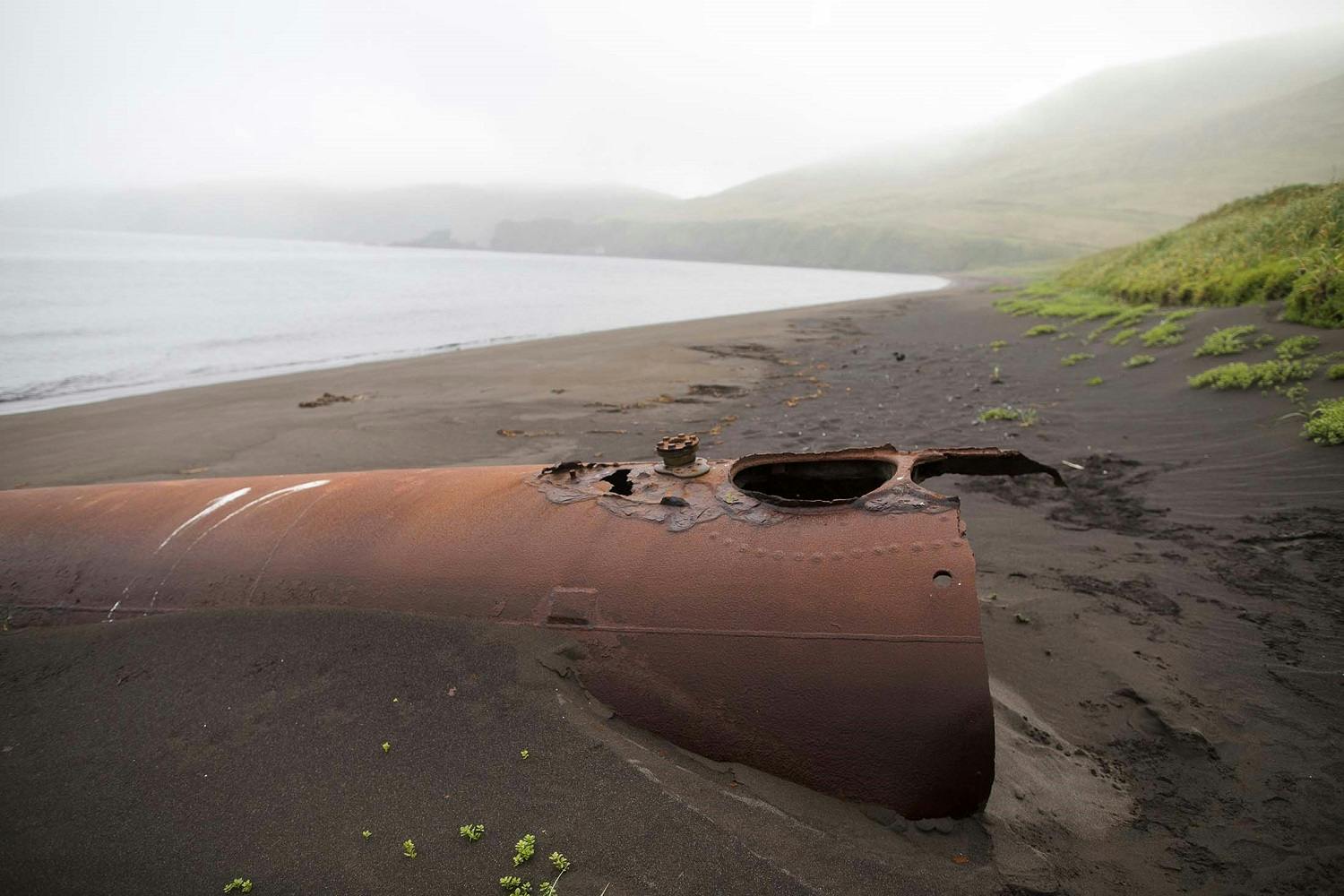Exploring the Rugged Beauty and WWII History of the Aleutian Islands
I stand as close as I dare to the edge of a cliff on Alaska’s Kodiak Island, listening to the restless splash of water below me. The moss and trees of the temperate rainforest are slowly, but determinedly, engulfing the concrete fortifications before me. They were once known as Fort Abercrombie, where hundreds of troops kept watch for approaching Japanese ships during World War II.
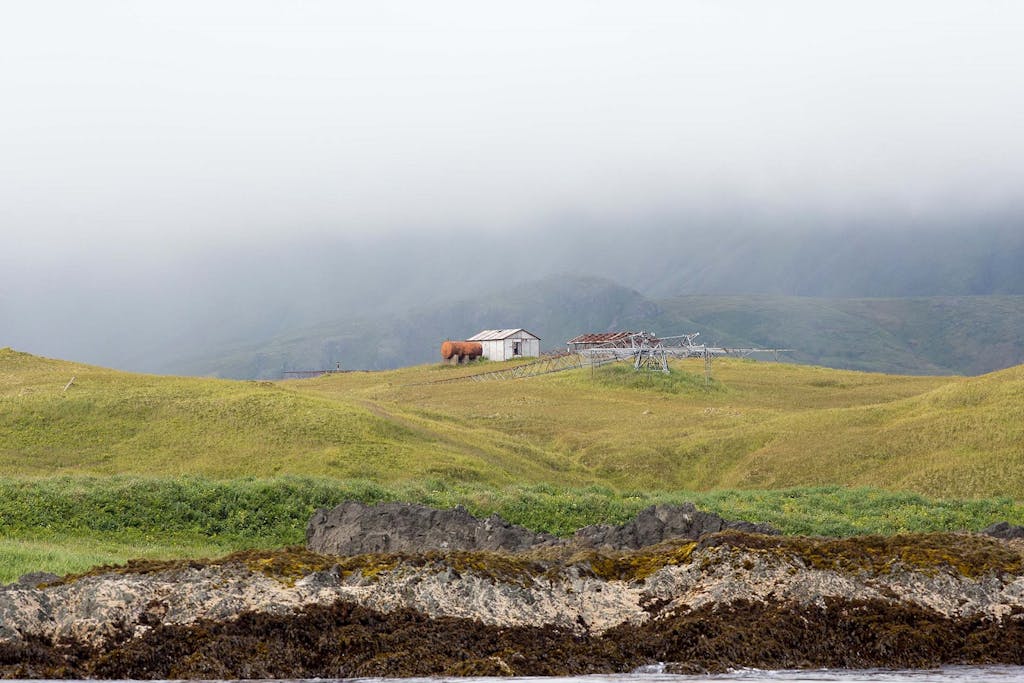
But the enemy never set foot on this particular stretch of coastline. If you want to see where war brushed its long fingers against American soil during the partial Japanese invasion of Alaska, then you must look west. To find the most interesting of Alaska’s historical sites, go past the Alaska Peninsula that sits dimly on the horizon and down the thousand-mile sweep of the Aleutian Islands, a treeless and windswept archipelago that ends in a place named Attu.
Battling the Aleutian Islands’ wind, waves and fog
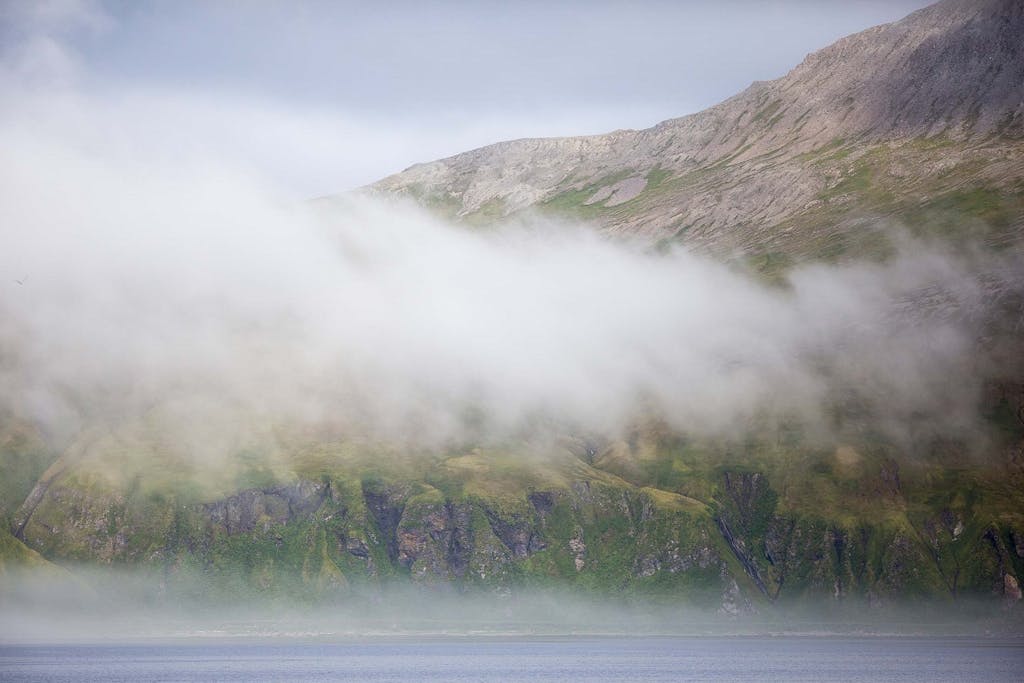
The Aleutian Islands aren’t the sort of place you generally go on your own. Remote and achingly beautiful, they’re subject to the whims of wind, waves and stubborn fog that can suddenly roll in and stay for days. That’s why it’s best to explore them as part of an expert-led tour.
“In the Aleutians, the weather can sometimes make things quite challenging,” explains Christian Walter, an expedition content specialist for Silversea Cruises. “But it is precisely due to the region’s meteorological conditions that the Aleutians were so valuable. Those occupying the islands could better predict the moves of the enemy in neighboring regions, using the weather.” But the weather itself was often the deciding factor in who won, lost or simply got lost.
World War II history in the Aleutians
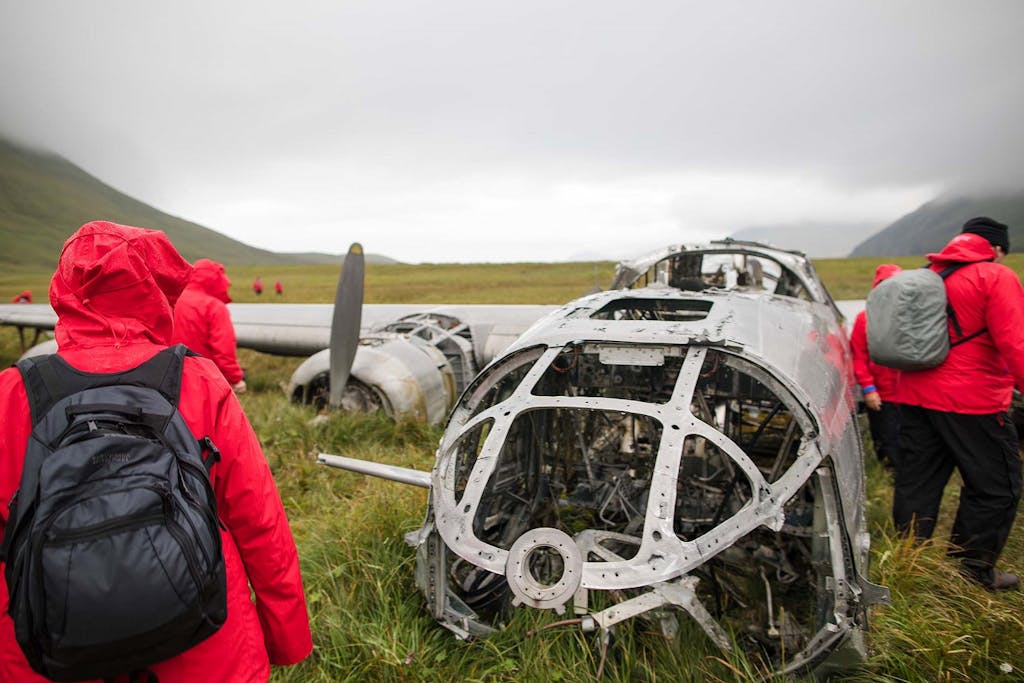
Japanese troops bombed the navy and army bases at Dutch Harbor, at the eastern end of the Aleutian Chain, and invaded Attu and Kiska in the western Aleutians.
When you step out of the Zodiac onto the shore of Atka Island — another link in the Aleutian Chain between Kiska and Dutch Harbor — you’ll see a sterling example of the third category. It’s the surprisingly intact fuselage and wings of a B-24D Liberator bomber, one of 13 partial or derelict examples still in existence.
This plane survived at least 18 reconnaissance missions in the Aleutian Islands. It was brought down, however, by the fog that first swallowed the original base on Adak, then its alternate landing site on Atka. Left with no other options, the crew made an emergency crash landing and miraculously walked away with only one injury: a broken collarbone.
Alaska’s historical sites include World War II battlefields
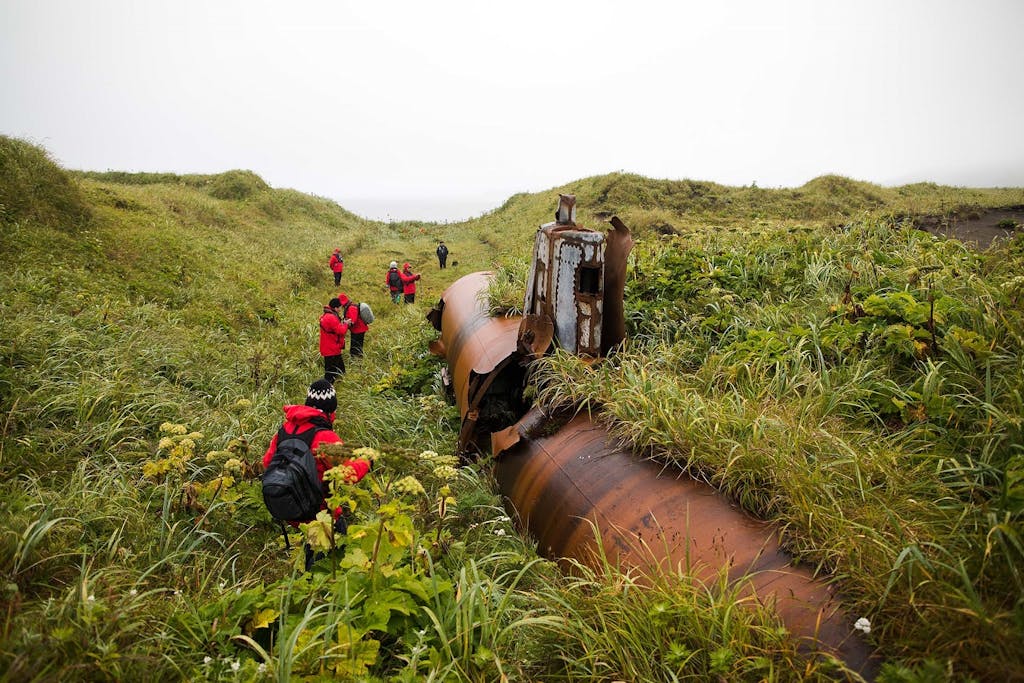
Each island contains its own distinct memories from the little-known World War II battles in Alaska. On Attu, the first island to be invaded in 1942 and then liberated almost a year later, you can see the remains of the top-secret LORAN station that guided American bombers as they left for Pacific targets.
Or you can make the trek to the top of Engineer Hill, the site of the last desperate counterattack against Allied troops that had come to take back the island. Here, you’ll find the starburst of a titanium peace memorial placed by the Japanese.
Months after that battle, thousands of Allied American and Canadian troops stormed Kiska as part of Operation Cottage. They were intent on conquering the last Japanese military base in the Aleutians, only to find that their enemies had retreated into the fog weeks before. Here, Walter says, one of the most surprising sights for guests is a two-person mini-submarine that still sits close to the beach. It’s one of the last, lingering relics of a little-known Japanese submarine base.
The flags that designate safe walking paths are another surprise. During the year of Japanese occupation, Allied forces dropped millions of pounds of bombs on the islands — so encountering live ordnance if you veer off the established path is a genuine possibility.
Marveling at the authentic beauty of the Aleutian Islands
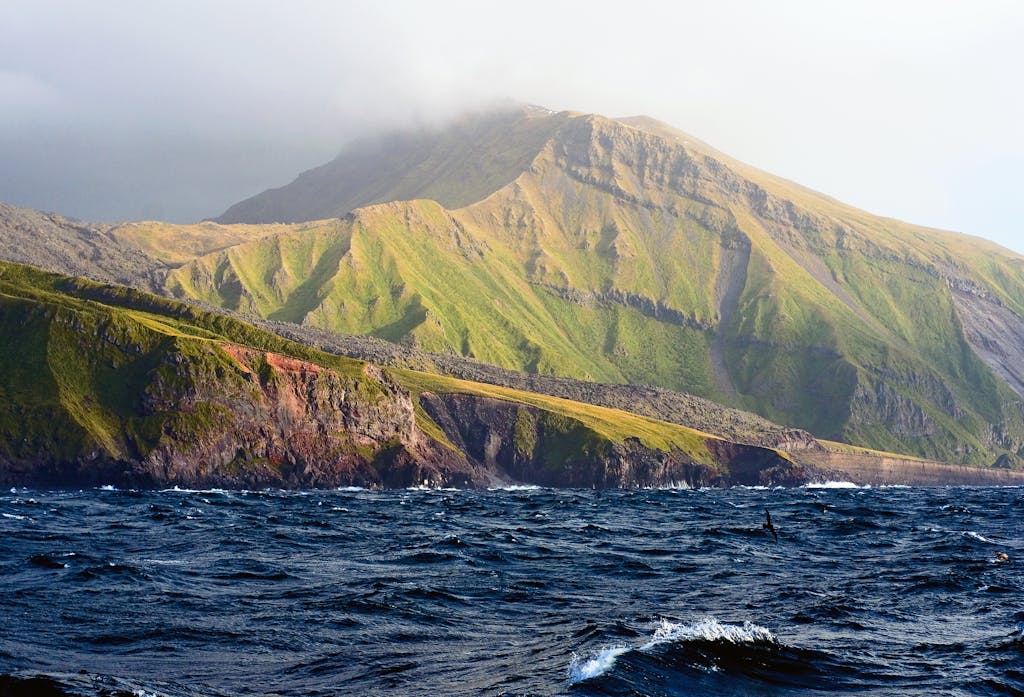
As surprising as it is to see the traces of hand-to-hand, face-to-face combat on American soil, don’t forget to look up and around. Many of Alaska’s historical sites also happen to be full of that exceptionally wild, “don’t blink” type of beauty that is rare, indeed.
There are the eye-catching onion domes of the Russian Orthodox Church in Dutch Harbor, which survived bombings to become a thriving fishing port, and the flourishing cliffside seabird colonies. The collision of sky, history and culture along Alaska’s coastline, contrasting with the vibrant green of the treeless Aleutians, will take your breath away if you let it.
It’s certainly taken mine; I’ve found myself a quiet perch beside the barrel of an eight-inch gun that once stood ready to defend Kodiak Island and the mainland. Now it is by turns a playground for curious children and a backrest for quiet observers like myself who’ve come to keep company with Fort Abercrombie during its steadfast watch. But reluctantly, I stand up. I’ve listened to the sea washing the island’s feet for long enough, and I have a ship to catch.
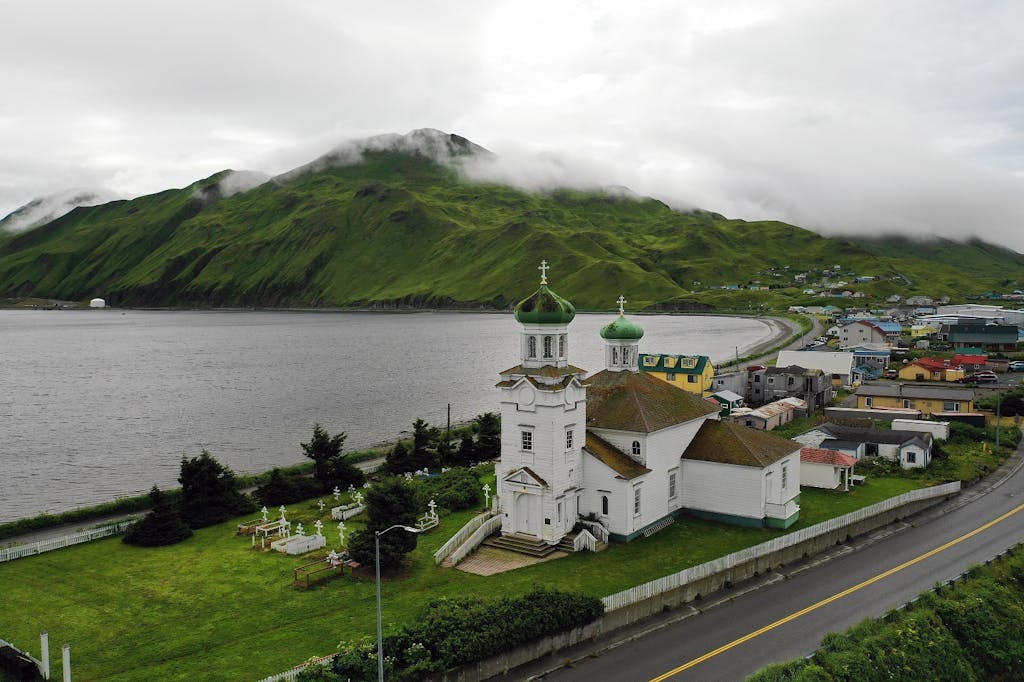
Do the history and the beauty of the Aleutian Islands appeal to you? Find a cruise here.
